Are you facing a problem with the Microsoft Internet Explorer, Firefox, Chrome and Microsoft Edge web-browsers that constantly redirects to a suspicious web page named Linknotification.com? Then, there are chances that are your machine is hijacked by ‘ad-supported’ software (also known as adware). It is created for the purpose of displaying tons of ads without the user’s consent or permission. If you want to remove annoying advertisements, you will not succeed, because the adware is very stubborn. Using the following tutorial, you surely can remove Linknotification.com ads completely from your web browsers.
While the computer is infected by the adware that causes unwanted Linknotification.com advertisements, when you start the Google Chrome, Internet Explorer, Firefox and Microsoft Edge or open any web-page, you may see in your internet browser’s status bar the following messages: ‘Waiting for Linknotification.com’, ‘Transferring data from Linknotification.com’, ‘Looking up Linknotification.com’, ‘Read Linknotification.com’, ‘Connected to Linknotification.com’.
The ‘ad supported’ software can modify the settings of the Mozilla Firefox, Chrome, Microsoft Edge and Internet Explorer, but often that a harmful software such as this can also affect all types of web browsers by changing their desktop shortcuts. Thus forcing the user each time open the web browser to see the intrusive Linknotification.com webpage.
Thus, it’s clear that the presence of adware on your computer is not desirable, and you need to clean up your system sooner. Follow the steps below in order to remove Linknotification.com pop up ads.
Remove Linknotification.com redirect (removal steps)
The following few simple steps will allow you to delete Linknotification.com pop up ads from the Chrome, Edge, Mozilla Firefox and Internet Explorer. Moreover, the steps below will allow you to remove malicious software, hijackers, PUPs and toolbars that your system may be infected. Please do the instructions step by step. If you need help or have any questions, then ask for our assistance or type a comment below. Read this manual carefully, bookmark or print it, because you may need to close your internet browser or restart your machine.
To remove Linknotification.com, perform the following steps:
- How to manually remove Linknotification.com
- Delete PUPs through the MS Windows Control Panel
- Remove unwanted Scheduled Tasks
- Clean up the internet browsers shortcuts that have been affected by adware
- Delete Linknotification.com ads from Mozilla Firefox
- Remove Linknotification.com pop-up ads from Google Chrome
- Delete Linknotification.com pop-up ads from IE
- Use free malware removal utilities to completely remove Linknotification.com ads
- Run AdBlocker to block Linknotification.com and stay safe online
- How did you get infected with Linknotification.com pop ups
- To sum up
How to manually remove Linknotification.com
Most common ad-supported software may be removed without any antivirus programs. The manual ad-supported software removal is steps that will teach you how to delete the Linknotification.com pop up advertisements.
Delete PUPs through the MS Windows Control Panel
We suggest that you start the computer cleaning process by checking the list of installed apps and delete all unknown or dubious programs. This is a very important step, as mentioned above, very often the malicious software such as ad-supported software and hijackers may be bundled with freeware. Uninstall the unwanted apps can get rid of the undesired advertisements or browser redirect.
Windows 8, 8.1, 10
First, click Windows button
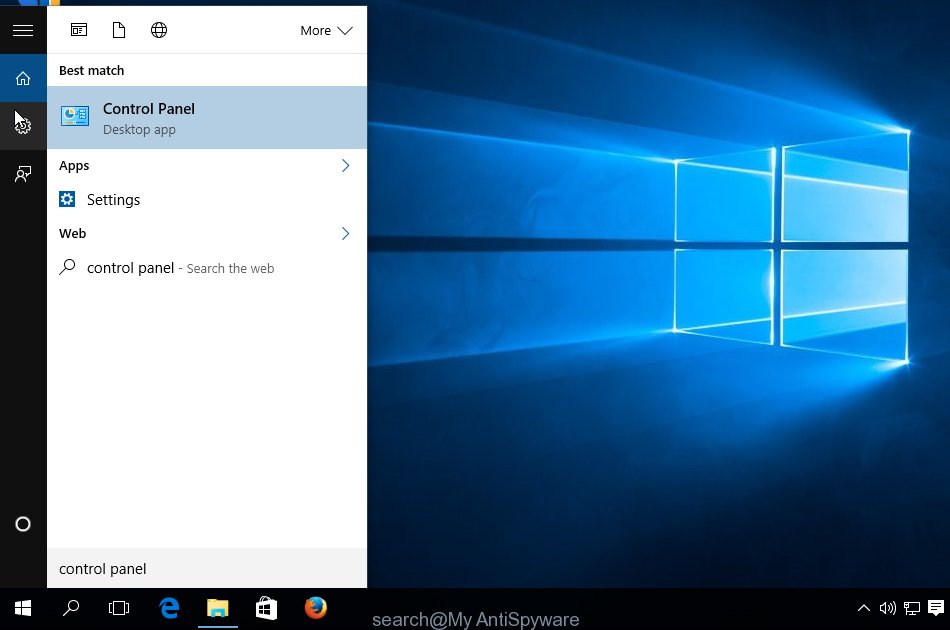
When the ‘Control Panel’ opens, press the ‘Uninstall a program’ link under Programs category as shown on the screen below.
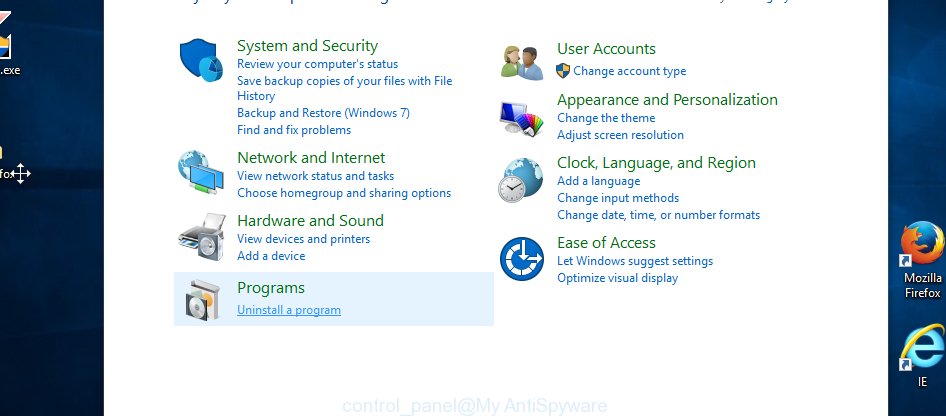
You will see the ‘Uninstall a program’ panel like below.

Very carefully look around the entire list of apps installed on your machine. Most probably, one of them is the ‘ad supported’ software responsible for Linknotification.com popups. If you’ve many applications installed, you can help simplify the search of harmful programs by sort the list by date of installation. Once you’ve found a suspicious, unwanted or unused program, right click to it, after that click ‘Uninstall’.
Windows XP, Vista, 7
First, click ‘Start’ button and select ‘Control Panel’ at right panel as shown in the following example.
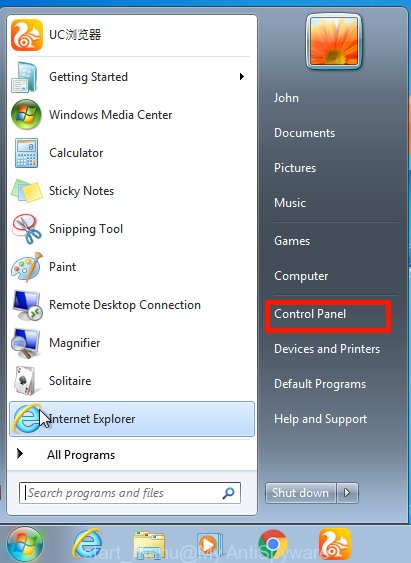
Once the Windows ‘Control Panel’ opens, you need to click ‘Uninstall a program’ under ‘Programs’ as shown in the following example.
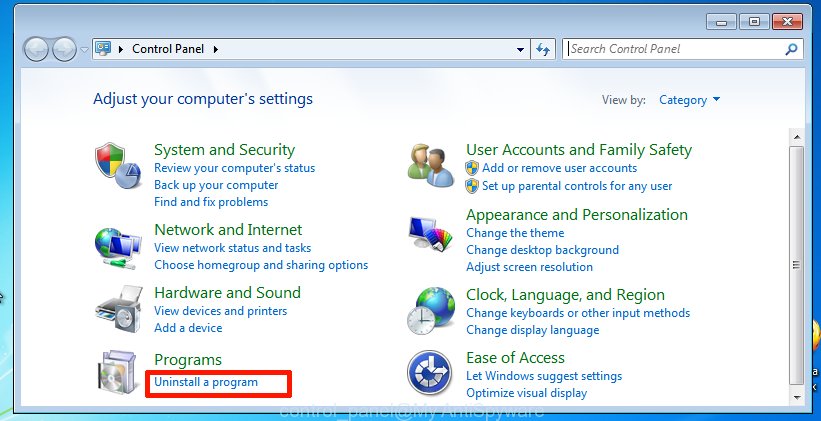
You will see a list of applications installed on your PC system. We recommend to sort the list by date of installation to quickly find the applications that were installed last. Most likely, it is the ad supported software that reroutes your internet browser to annoying Linknotification.com web-site. If you are in doubt, you can always check the application by doing a search for her name in Google, Yahoo or Bing. Once the application which you need to uninstall is found, simply click on its name, and then click ‘Uninstall’ like below.
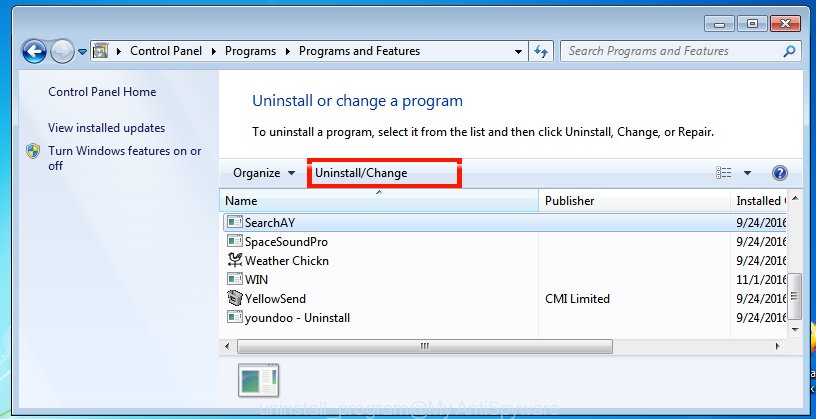
Remove unwanted Scheduled Tasks
If the unwanted Linknotification.com website opens automatically on Windows startup or at equal time intervals, then you need to check the Task Scheduler Library and remove all tasks which have been created by ‘ad-supported’ program.
Press Windows and R keys on the keyboard at the same time. This displays a dialog box that called Run. In the text field, type “taskschd.msc” (without the quotes) and click OK. Task Scheduler window opens. In the left-hand side, click “Task Scheduler Library”, as on the image below.
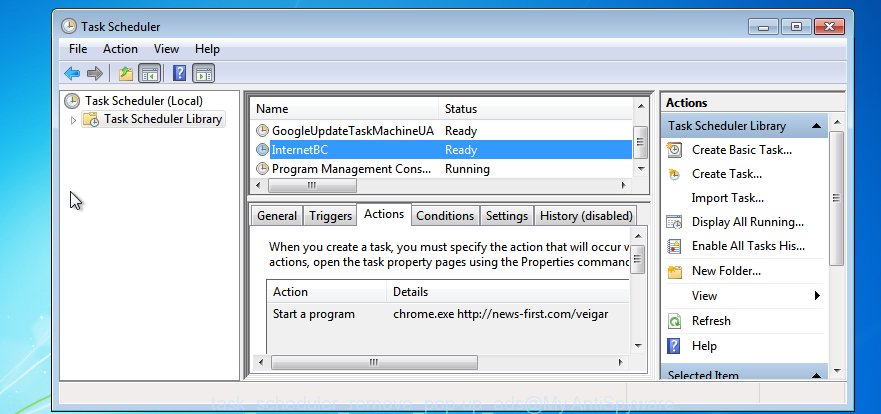
Task scheduler
In the middle part you will see a list of installed tasks. Please choose the first task, its properties will be open just below automatically. Next, click the Actions tab. Pay attention to that it launches on your system. Found something like “explorer.exe http://site.address” or “chrome.exe http://site.address”, then get rid of this malicious task. If you are not sure that executes the task, check it through a search engine. If it is a component of the adware, then this task also should be removed.
Having defined the task that you want to remove, then press on it with the right mouse button and choose Delete as shown in the following example.

Delete a task
Repeat this step, if you have found a few tasks which have been created by ‘ad-supported’ program. Once is done, close the Task Scheduler window.
Clean up the internet browsers shortcuts that have been affected by adware
After installed, this adware that created to reroute your web browser to various ad web-sites like Linknotification.com, may add an argument like “http://site.address” into the Target property of the desktop shortcut file for the Internet Explorer, Google Chrome, Firefox and MS Edge. Due to this, every time you run the browser, it will open an annoying ad website.
Open the properties of the web-browser shortcut file. Right click on the shortcut of affected web browser and choose the “Properties” option and it will open the properties of the shortcut. Next, choose the “Shortcut” tab and have a look at the Target field as shown on the screen below.
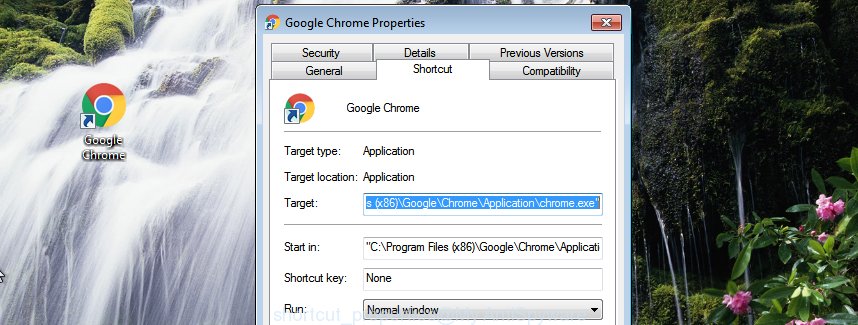
Normally, if the last word in the Target field is chrome.exe, iexplore.exe, firefox.exe. Be sure to pay attention to the extension, should be “exe”! All shortcut files that have been altered by adware responsible for Linknotification.com advertisements, usually point to .bat, .cmd or .url files instead of .exe as displayed below

Another variant, an address has been added at the end of the line. In this case the Target field looks like …Application\chrome.exe” http://site.address like below.

In order to fix the hijacked shortcut, you need to insert right path to the Target field or remove an address (if it has been added at the end). You can use the following information to fix your shortcut files which have been changed by ad supported software related to Linknotification.com advertisements.
| Google Chrome | C:\Program Files (x86)\Google\Chrome\Application\chrome.exe |
| C:\Program Files\Google\Chrome\Application\chrome.exe | |
| Firefox | C:\Program Files\Mozilla Firefox\firefox.exe |
| Microsoft Internet Explorer | C:\Program Files (x86)\Internet Explorer\iexplore.exe |
| C:\Program Files\Internet Explorer\iexplore.exe | |
| Opera | C:\Program Files (x86)\Opera\launcher.exe |
| C:\Program Files\Opera\launcher.exe |
Once is finished, click OK to save changes. Repeat the step for all web-browsers which are redirected to the Linknotification.com annoying site.
Delete Linknotification.com ads from Mozilla Firefox
Resetting Mozilla Firefox browser will reset all the settings to their original state and will remove Linknotification.com advertisements, malicious add-ons and extensions. It will keep your personal information like browsing history, bookmarks, passwords and web form auto-fill data.
First, run the Firefox and click ![]() button. It will show the drop-down menu on the right-part of the web-browser. Further, press the Help button (
button. It will show the drop-down menu on the right-part of the web-browser. Further, press the Help button (![]() ) as shown in the figure below.
) as shown in the figure below.

In the Help menu, select the “Troubleshooting Information” option. Another way to open the “Troubleshooting Information” screen – type “about:support” in the browser adress bar and press Enter. It will display the “Troubleshooting Information” page as shown in the figure below. In the upper-right corner of this screen, press the “Refresh Firefox” button.

It will display the confirmation prompt. Further, click the “Refresh Firefox” button. The Mozilla Firefox will begin a procedure to fix your problems that caused by the adware that causes multiple undesired pop ups. When, it’s finished, press the “Finish” button.
Remove Linknotification.com pop-up ads from Google Chrome
Run the Reset browser tool of the Chrome to reset all its settings like newtab page, homepage and search provider to original defaults. This is a very useful utility to use, in the case of web-browser redirects to intrusive ad pages like Linknotification.com.
Open the Google Chrome menu by clicking on the button in the form of three horizontal dotes (![]() ). It will display the drop-down menu. Select More Tools, then press Extensions.
). It will display the drop-down menu. Select More Tools, then press Extensions.
Carefully browse through the list of installed add-ons. If the list has the add-on labeled with “Installed by enterprise policy” or “Installed by your administrator”, then complete the following guidance: Remove Google Chrome extensions installed by enterprise policy otherwise, just go to the step below.
Open the Google Chrome main menu again, press to “Settings” option.

Scroll down to the bottom of the page and click on the “Advanced” link. Now scroll down until the Reset settings section is visible, as on the image below and press the “Reset settings to their original defaults” button.

Confirm your action, click the “Reset” button.
Delete Linknotification.com pop-up ads from IE
The Internet Explorer reset is great if your web-browser is hijacked or you have unwanted addo-ons or toolbars on your web browser, which installed by an malicious software.
First, launch the Internet Explorer. Next, press the button in the form of gear (![]() ). It will open the Tools drop-down menu, click the “Internet Options” as displayed in the figure below.
). It will open the Tools drop-down menu, click the “Internet Options” as displayed in the figure below.

In the “Internet Options” window click on the Advanced tab, then click the Reset button. The Internet Explorer will show the “Reset Internet Explorer settings” window as displayed on the image below. Select the “Delete personal settings” check box, then press “Reset” button.

You will now need to restart your system for the changes to take effect.
Use free malware removal utilities to completely remove Linknotification.com ads
There are not many good free anti malware programs with high detection ratio. The effectiveness of malware removal utilities depends on various factors, mostly on how often their virus/malware signatures DB are updated in order to effectively detect modern malicious software, ad supported software, browser hijackers and other potentially unwanted programs. We suggest to run several applications, not just one. These programs which listed below will help you remove all components of the ad supported software from your disk and Windows registry and thereby remove Linknotification.com popup advertisements.
Get rid of Linknotification.com redirect with Zemana Anti-malware
We suggest using the Zemana Anti-malware. You can download and install Zemana Anti-malware to find out and remove Linknotification.com popups from the Mozilla Firefox, Edge, Chrome and Internet Explorer internet browsers. When installed and updated, the malicious software remover will automatically scan and detect all threats present on your personal computer.
Installing the Zemana Anti Malware (ZAM) is simple. First you will need to download Zemana Anti Malware on your Windows Desktop from the link below.
165491 downloads
Author: Zemana Ltd
Category: Security tools
Update: July 16, 2019
After the download is finished, close all software and windows on your computer. Double-click the install file called Zemana.AntiMalware.Setup. If the “User Account Control” dialog box pops up as on the image below, click the “Yes” button.
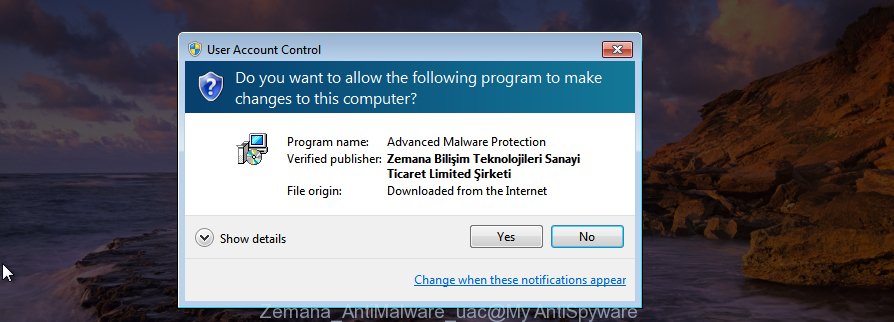
It will open the “Setup wizard” which will help you install Zemana on your computer. Follow the prompts and do not make any changes to default settings.

Once installation is finished successfully, Zemana will automatically start and you can see its main screen as displayed on the screen below.

Now press the “Scan” button . Zemana Free utility will begin scanning the whole PC to find out ad-supported software that causes web-browsers to open undesired Linknotification.com pop up ads. A scan can take anywhere from 10 to 30 minutes, depending on the number of files on your PC system and the speed of your PC. While the Zemana Free tool is checking, you can see how many objects it has identified as being infected by malicious software.

When Zemana Free has finished scanning your system, the results are displayed in the scan report. You may delete threats (move to Quarantine) by simply click “Next” button. The Zemana will begin to delete ad-supported software that causes multiple unwanted pop up ads. After finished, you may be prompted to reboot the computer.
Run Hitman Pro to remove Linknotification.com pop-ups
Hitman Pro is a free removal utility that can check your computer for a wide range of security threats like malware, ad supported softwares, potentially unwanted software as well as adware responsible for Linknotification.com redirect. It will perform a deep scan of your computer including hard drives and Windows registry. After a malware is detected, it will help you to delete all detected threats from your PC by a simple click.
Installing the HitmanPro is simple. First you will need to download Hitman Pro on your MS Windows Desktop from the link below.
Download and run Hitman Pro on your system. Once started, click “Next” button to perform a system scan for the adware which redirects your browser to intrusive Linknotification.com web-page. This task can take some time, so please be patient. When a malware, ad-supported software or potentially unwanted applications are detected, the count of the security threats will change accordingly. .
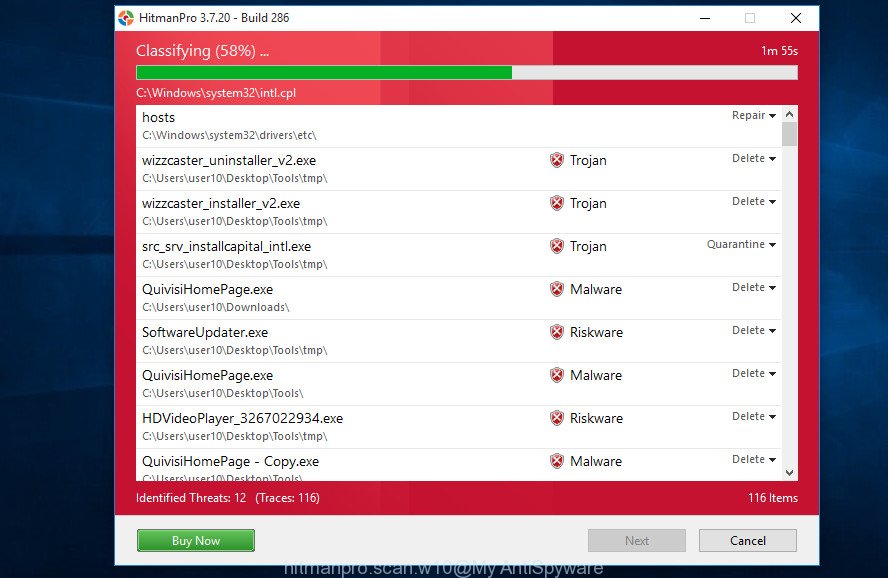
After the scan is done, Hitman Pro will show a list of all items detected by the scan.
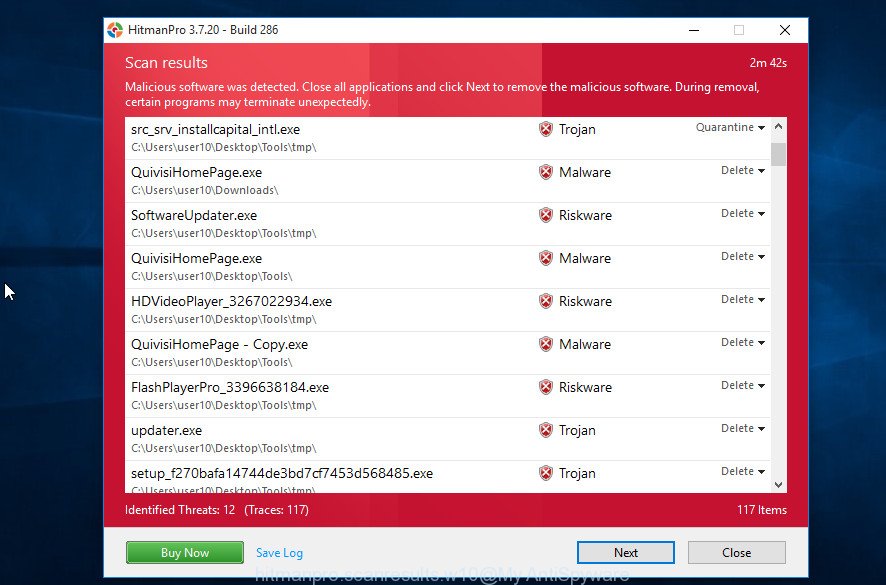
In order to remove all items, simply click Next button.
It will display a dialog box, click the “Activate free license” button to start the free 30 days trial to remove all malicious software found.
How to automatically get rid of Linknotification.com with Malwarebytes
We advise using the Malwarebytes Free which are completely clean your personal computer of the adware. The free utility is an advanced malware removal application created by (c) Malwarebytes lab. This program uses the world’s most popular anti-malware technology. It is able to help you delete annoying Linknotification.com ads from your browsers, potentially unwanted applications, malicious software, hijackers, toolbars, ransomware and other security threats from your machine for free.
Visit the page linked below to download MalwareBytes Anti-Malware. Save it directly to your Microsoft Windows Desktop.
327714 downloads
Author: Malwarebytes
Category: Security tools
Update: April 15, 2020
Once downloading is done, close all windows on your computer. Further, run the file called mb3-setup. If the “User Account Control” dialog box pops up like below, click the “Yes” button.
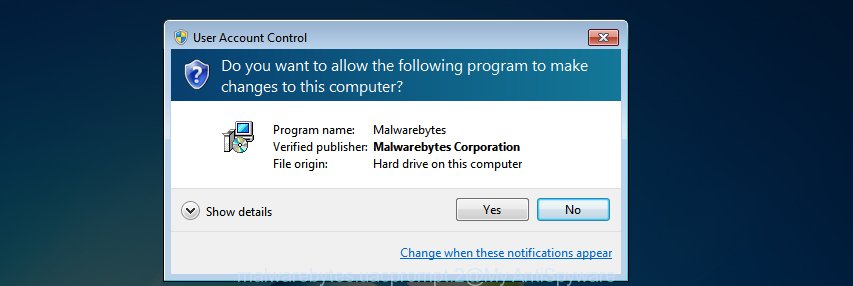
It will open the “Setup wizard” which will help you install MalwareBytes Anti Malware (MBAM) on the system. Follow the prompts and don’t make any changes to default settings.
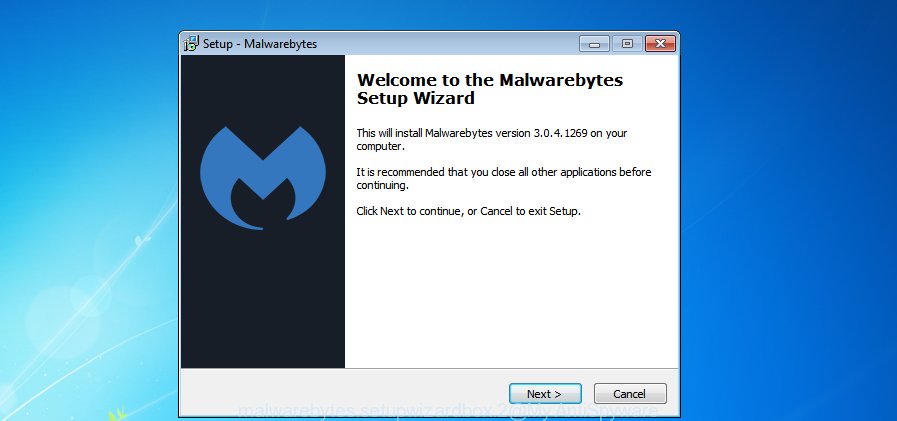
Once setup is complete successfully, press Finish button. Then MalwareBytes will automatically start and you can see its main window as shown on the image below.
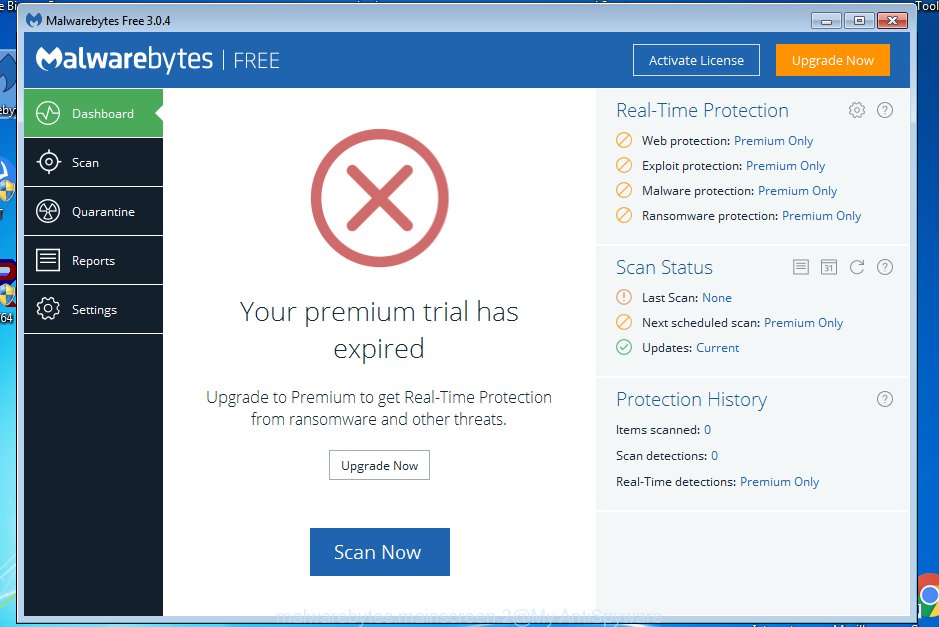
Next, click the “Scan Now” button to perform a system scan for the ad-supported software that causes multiple annoying pop-ups. A scan can take anywhere from 10 to 30 minutes, depending on the number of files on your PC and the speed of your personal computer. While the MalwareBytes Anti-Malware (MBAM) program is checking, you may see how many objects it has identified as threat.
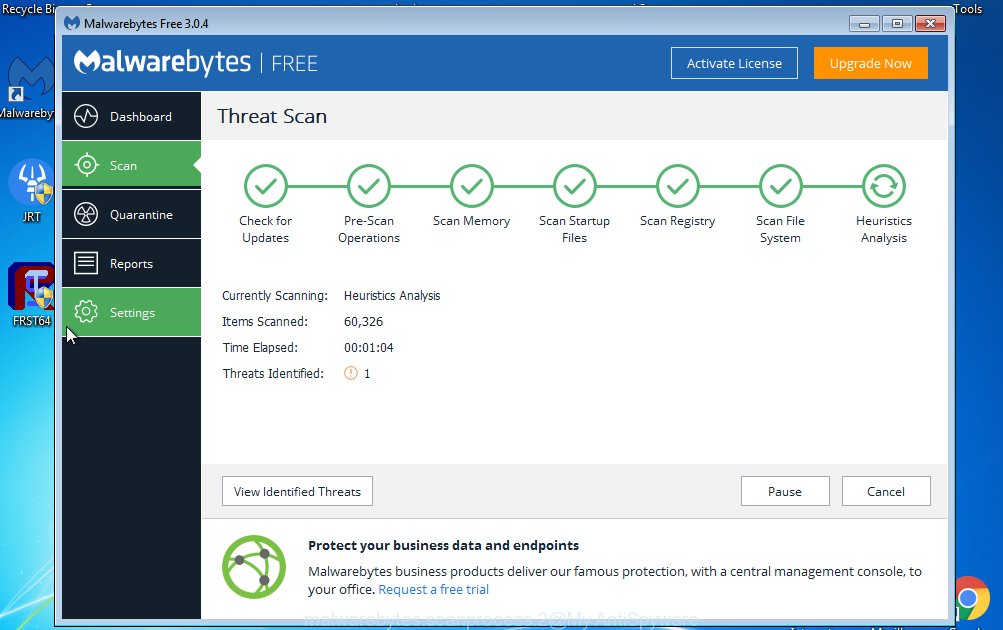
When that process is finished, a list of all threats detected is created. Review the scan results and then press “Quarantine Selected” button.
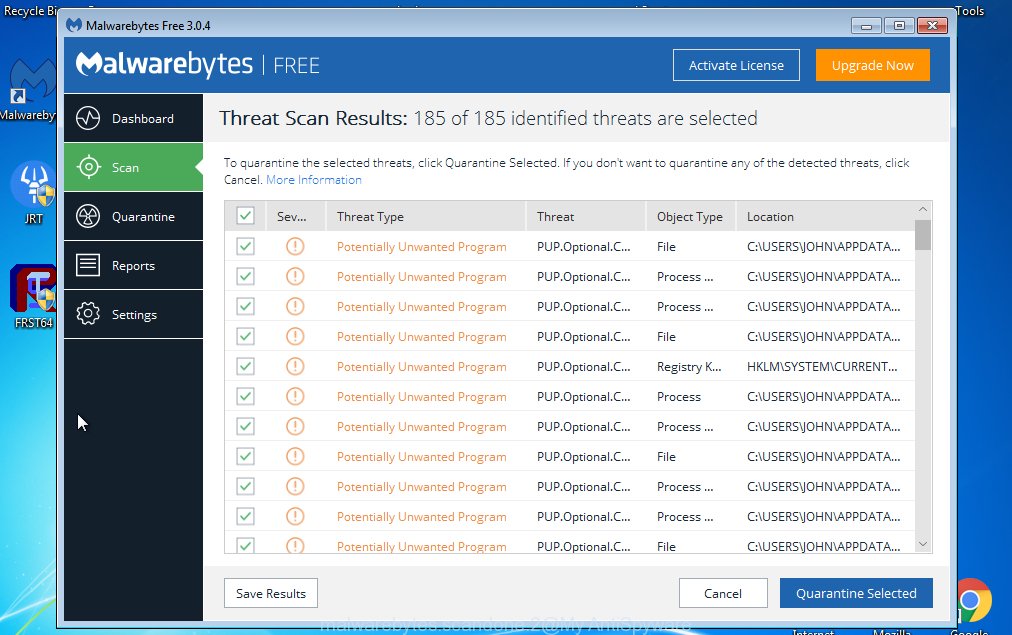
The MalwareBytes Anti-Malware will begin to delete ‘ad supported’ software responsible for Linknotification.com redirect. Once that process is complete, you may be prompted to restart your computer. We suggest you look at the following video, which completely explains the process of using the MalwareBytes Anti Malware to delete hijackers, adware and other malware.
Run AdBlocker to block Linknotification.com and stay safe online
If you want to delete intrusive advertisements, web browser redirections and pop ups, then install an ad-blocker program like AdGuard. It can stop Linknotification.com, advertisements, pop ups and block web sites from tracking your online activities when using the Microsoft Internet Explorer, Microsoft Edge, Mozilla Firefox and Google Chrome. So, if you like surf the World Wide Web, but you do not like undesired advertisements and want to protect your computer from malicious web pages, then the AdGuard is your best choice.
- Download AdGuard by clicking on the link below. Save it to your Desktop so that you can access the file easily.
Adguard download
27034 downloads
Version: 6.4
Author: © Adguard
Category: Security tools
Update: November 15, 2018
- After downloading it, start the downloaded file. You will see the “Setup Wizard” program window. Follow the prompts.
- Once the installation is complete, click “Skip” to close the installation program and use the default settings, or click “Get Started” to see an quick tutorial that will allow you get to know AdGuard better.
- In most cases, the default settings are enough and you do not need to change anything. Each time, when you start your computer, AdGuard will run automatically and stop popup ads, sites such as Linknotification.com, as well as other malicious or misleading sites. For an overview of all the features of the program, or to change its settings you can simply double-click on the icon called AdGuard, that is located on your desktop.
How did you get infected with Linknotification.com pop ups
In many cases, the free applications setup file includes optional applications like this ad supported software which redirects your web-browser to unwanted Linknotification.com webpage. So, be very careful when you agree to install anything. The best way – is to select a Custom, Advanced or Manual installation mode. Here uncheck all additional software in which you are unsure or that causes even a slightest suspicion. The main thing you should remember, you don’t need to install any bundled programs which you don’t trust! The only one thing I want to add. Once the free programs is installed, if you uninstall this software, the annoying Linknotification.com ads will not be removed. This must be done by yourself. Just follow the step-by-step tutorial above.
To sum up
Once you’ve complete the step-by-step guide outlined above, your PC should be clean from ‘ad supported’ software that causes web-browsers to display intrusive Linknotification.com ads and other malicious software. The Google Chrome, Mozilla Firefox, IE and Edge will no longer reroute you to various intrusive web pages such as Linknotification.com. Unfortunately, if the steps does not help you, then you have caught a new adware, and then the best way – ask for help in our Spyware/Malware removal forum.


















